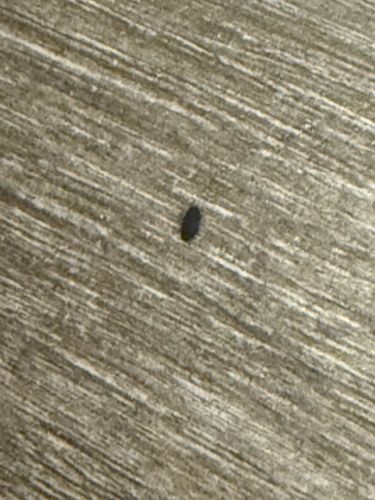Carpet Beetle (larva)
Scientific Name: Anthrenus scrophulariae (likely, but positive ID difficult from image)
Order & Family: Coleoptera, Dermestidae
Size: 1-5 mm (larva size typically around 2-5 mm)

Natural Habitat
Indoors, especially in undisturbed areas under carpets, rugs, upholstered furniture, closets, or in attics. Outdoors, they can be found in bird nests, animal carcasses, or feeding on pollen.
Diet & Feeding
Larvae feed on a variety of organic materials of animal origin, including wool, silk, fur, feathers, leather, and dried animal products. They can also feed on plant-based materials like cotton or linen if stained with food or body oils. Adult carpet beetles primarily feed on pollen and nectar.
Behavior Patterns
The larval stage is the destructive stage, causing damage to household goods. They are often found in dark, undisturbed areas. They molt several times, leaving behind shed skins. Adult carpet beetles are often found near windows as they are attracted to light, seeking to lay eggs on suitable larval food sources. They do not bite humans.
Risks & Benefits
Risks: Can cause significant damage to textiles, clothing, carpets, and museum specimens made of natural fibers. They do not transmit diseases. Benefits: As scavengers, they play a role in breaking down organic matter in natural environments. They are also sometimes used in forensic entomology.
Identified on: 11/18/2025